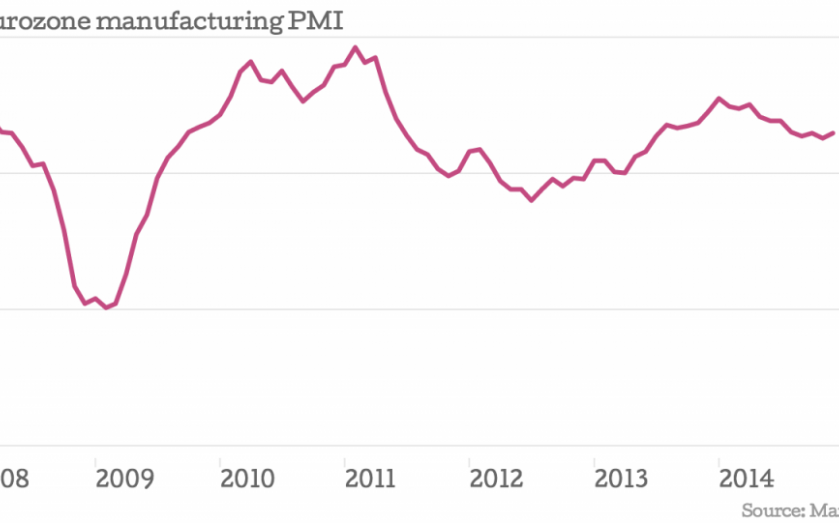Eurozone manufacturing growth up slightly, but Italy hits 19-month low as France struggles

After Draghi was doveish, manufacturing data was bearish.
The rate of growth for the Eurozone's manufacturing sector was 50.6 compared to the Markit purchasing managers’ index score, where anything above 50 represents growth.
The score brings the rate of growth for the quarter to 50.4, bumping along the line between growth and contraction (see chart above).
Weighing down the index were Italy and France. Italy is sliding in the wrong direction entirely, with its reading of 48.4, while still above France’s, still representing the lowest rate for 19 months. France was at a four-month low, while Greece and Austria, the other two countries whose indices are shrinking, were at four-month highs.

Chris Williamson, chief economist at Markit, said:
Eurozone factory activity more or less stagnated again in December, rounding off a year which saw an initial, promising-looking upturn fade away and stall in the second half of the year.The crisis in Ukraine and a renewed lack of confidence in the ability of euro area policymakers to revive the region’s economy appear to have been the main catalysts to fuel increased economic uncertainty, causing companies to grow more risk averse and pull back on expansion plans.
Williamson did say that he saw some signs for optimism and cited Spain and Holland’s growth as positive.
We should hopefully see growth pick up in coming months. Lower costs, linked to falling oil prices, are helping manufacturers to reduce their selling prices, and the drop in fuel prices should also boost consumer spending.